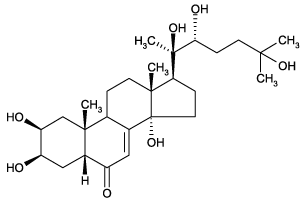Pregnancycategory X Legal status Undetermined Biological half-life 4-9 hours Molar mass 480.63 g/mol | Routes ofadministration Oral Metabolism Excretion Urinary:?% | |
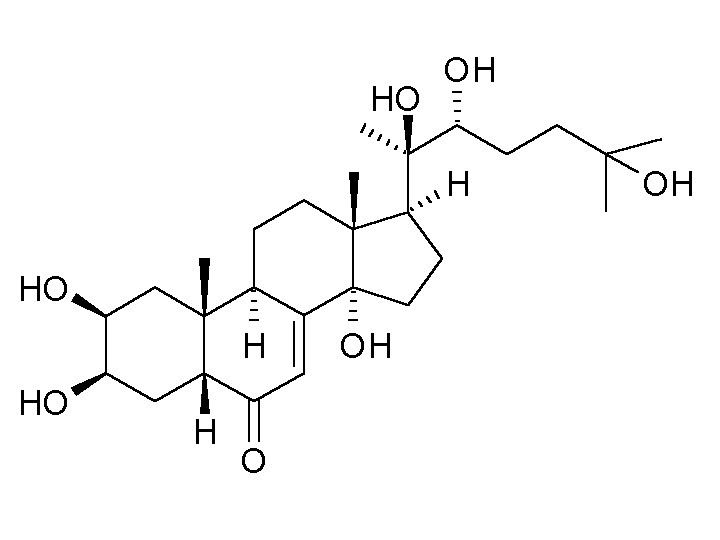 | ||
20-Hydroxyecdysone (ecdysterone or 20E) is a naturally occurring ecdysteroid hormone which controls the ecdysis (moulting) and metamorphosis of arthropods. It is therefore one of the most common moulting hormones in insects, crabs, etc. It is also a phytoecdysteroid produced by various plants, including Cyanotis vaga, where its purpose is presumably to disrupt the development and reproduction of insect pests. In arthropods, 20-hydroxyecdysone acts through the ecdysone receptor. Although mammals lack this receptor, 20-hydroxyecdysone may affect mammalian (including human) biological systems in vitro, but there is uncertainty whether any in vivo or physiological effects occur. 20-Hydroxyecdysone is an ingredient of some supplements that aim to enhance physical performance, but there is no clinical evidence for this effect.
Contents
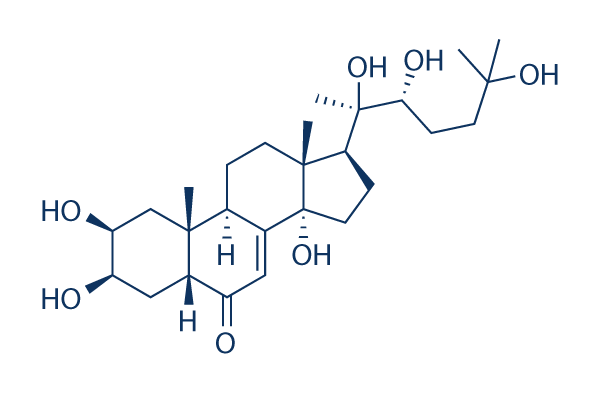
Ecdysteroid activity in arthropods
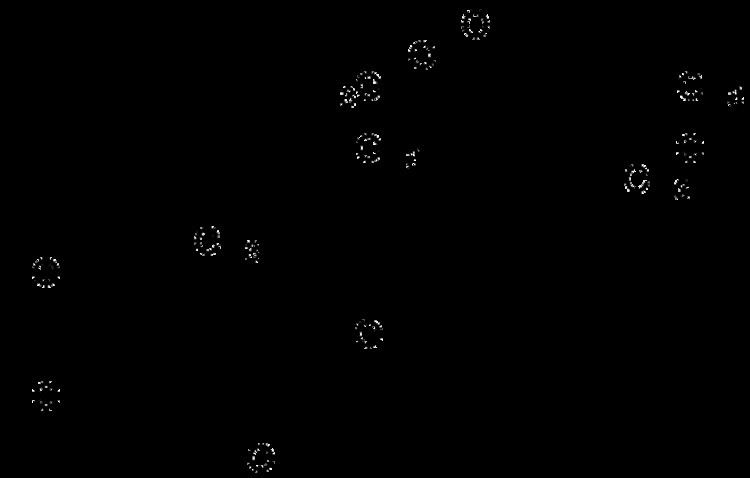
An ecdysteroid is a type of steroid hormones in insects that are derived from enzymatic modification of cholesterol by p450 enzymes. This occurs by a mechanism similar to steroid synthesis in vertebrates. Ecdysone and 20-hydroxyecdysone regulate larval molts, onset of puparium formation, and metamorphosis. Being that these hormones are hydrophobic, they traverse lipid membranes and permeate the tissues of an organism. Indeed, the main receptor of these hormone signals - the ecdysone receptor - is an intracellular protein.
Use as supplement
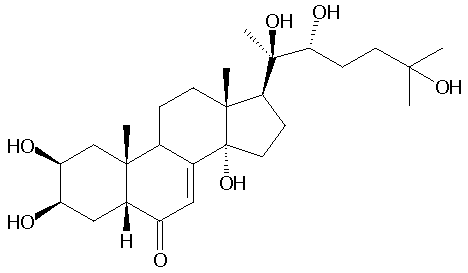
20-Hydroxyecdysone and other ecdysteroids are marketed as ingredients in nutritional supplements for various sports, particularly bodybuilding. The evidence to support such use, however, is limited. A comprehensive study, designed to find any strength or athletic improvement from 20-hydroxyecdysone, was published in 2006. The study looked for improvement in actual exercises performed and tested for improvements/increases in chemical indicators such as body composition and free/available testosterone. The study concluded that supplementation with up to 200 mg per day had no effect.
Use as research tool
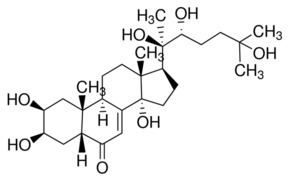
20-Hydroxyecdysone and other ecdysteroids are used in biochemistry research as inducers in transgenic animals, whereby a new gene is introduced into an animal so that its expression is under the control of an introduced ecdysone receptor. Adding or removing ecdysteroids from the animal's diet then gives a convenient way to turn the inserted gene on or off (see ecdysone receptor). At usual doses, 20-hydroxyecdysone appears to have little or no effect on animals that do not have extra genes inserted; it also has high bioavailability when taken orally, so it is useful for determining whether the transgene has been taken up effectively. For uses in gene therapy, it may be necessary to investigate more thoroughly the natural sources of ecdysteroids in humans (which appear to include dietary phytoecdysteroids, gut flora, helminth infections, and other diseases).
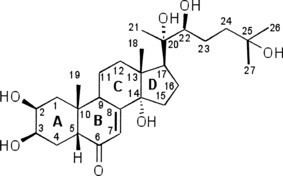
There is some in vitro evidence to show that 20-hydroxyecdysone has effects on some kinds of blood cells such as lymphocytes and neutrophils, and may act as an immunomodulator. This would explain the mechanism behind Helminthic therapy due to the production of ecdysteroids by helminths, as mentioned above.
